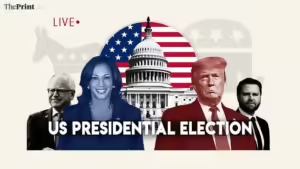 A second term for Donald Trump would likely have significant implications for the U.S. economy, though the exact effects depend on the specific policies he would pursue. Here are some potential outcomes based on his previous tenure and campaign proposals:
A second term for Donald Trump would likely have significant implications for the U.S. economy, though the exact effects depend on the specific policies he would pursue. Here are some potential outcomes based on his previous tenure and campaign proposals:
- Tax Policy: Trump could push for further tax cuts, particularly targeting businesses and high-income individuals. This would likely stimulate short-term economic growth but could also increase the federal deficit and debt in the long run. In his first term, his tax cuts were credited with driving corporate profits and stock market gains, but critics argue they disproportionately benefited the wealthy.
- Regulation Rollback: Trump has long advocated for reducing government regulations, particularly in sectors like energy, finance, and healthcare. This could make it easier for businesses to operate, potentially leading to increased investment and job creation. However, opponents warn that deregulation could also lead to environmental degradation and weaker protections for consumers.
- Trade and Tariffs: Trump’s trade policies, particularly his “America First” approach, included tariffs on China and other countries to reduce trade imbalances. A second term might see continued trade tensions, though some experts believe Trump could focus more on negotiating favorable trade deals rather than escalating conflicts. These policies could benefit certain industries but disrupt global supply chains and lead to higher costs for consumers.
- Immigration Policy: Trump’s stance on immigration, including restrictions on labor immigration and efforts to curb illegal immigration, might lead to labor shortages in certain sectors, particularly agriculture, construction, and tech. However, it could also reduce competition for jobs in lower-wage industries.
- Monetary Policy and Inflation: Trump has criticized the Federal Reserve for raising interest rates in the past. A second term might see him pressuring the Fed to keep rates low to promote economic growth, which could fuel higher inflation if not managed carefully.
- Infrastructure and Investment: While Trump advocated for infrastructure spending during his first term, progress was slow. A second term could see renewed efforts in this area, potentially creating jobs and stimulating economic growth, but funding for such initiatives would be a key challenge, especially with large budget deficits.
- Public Confidence and Markets: Trump’s leadership style has been polarizing, and his rhetoric often has a direct impact on market confidence. A second term could lead to increased volatility in the stock market, as investors react to his decisions on trade, regulation, and government spending.

